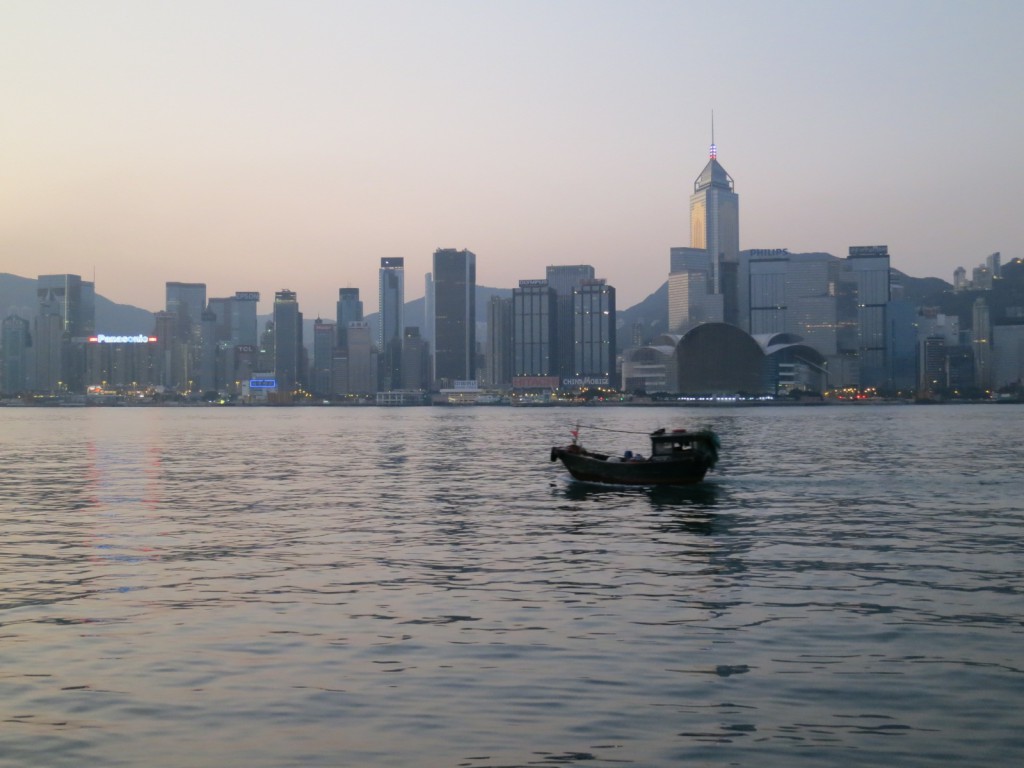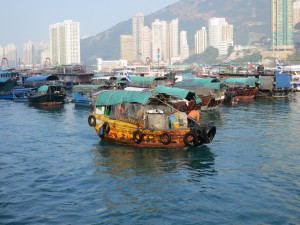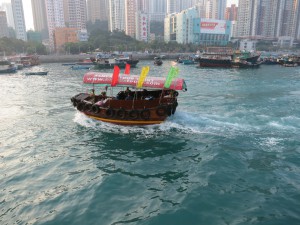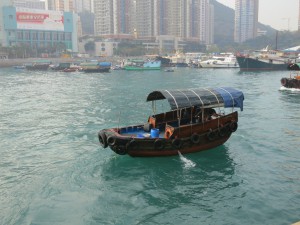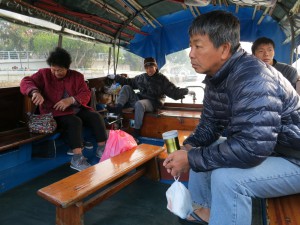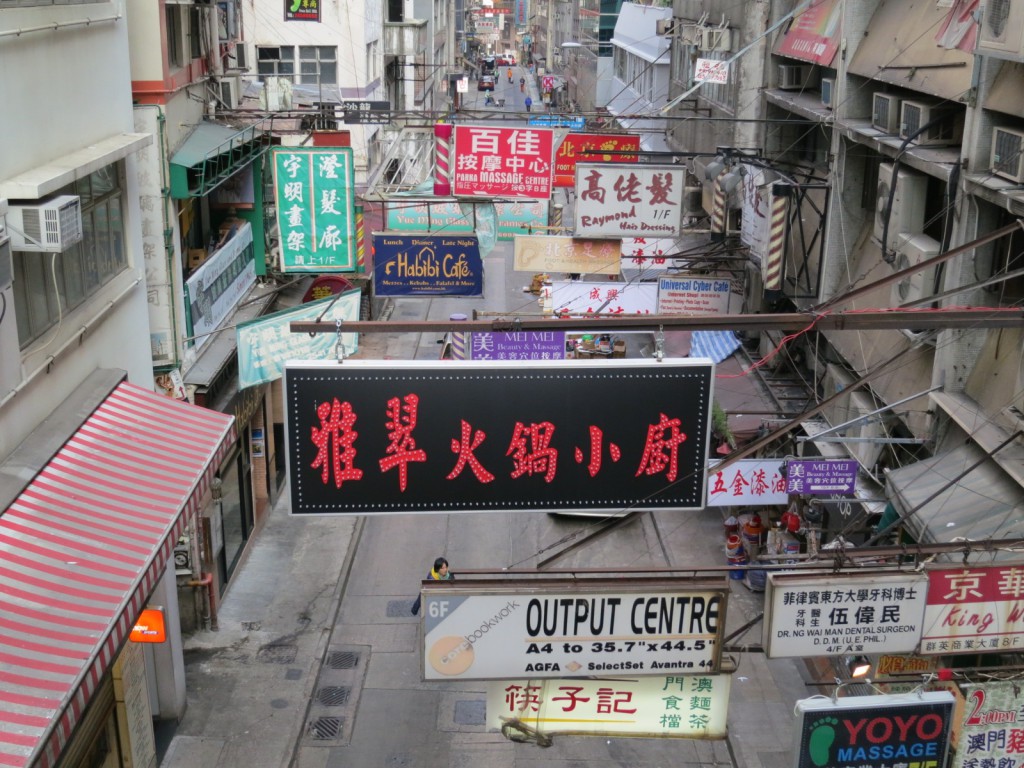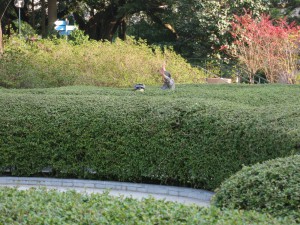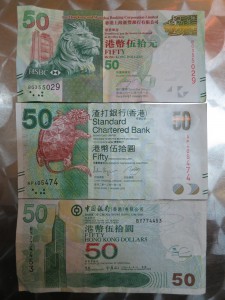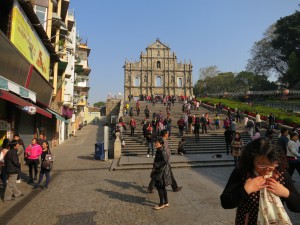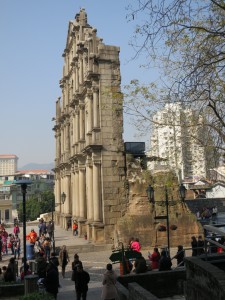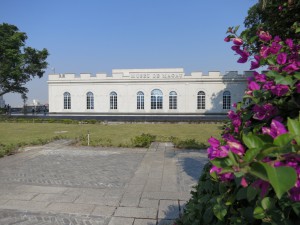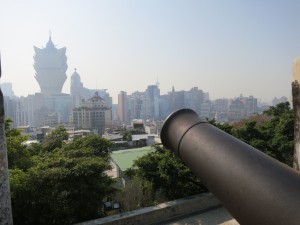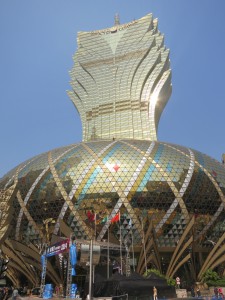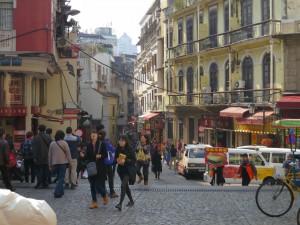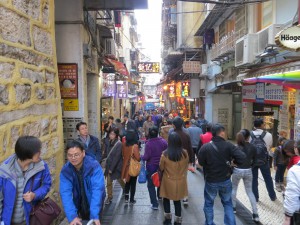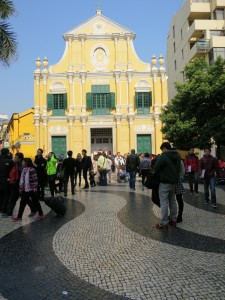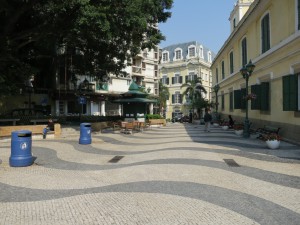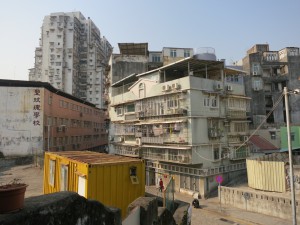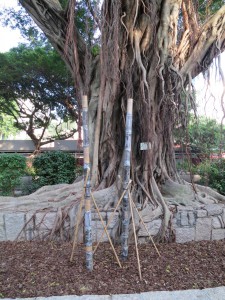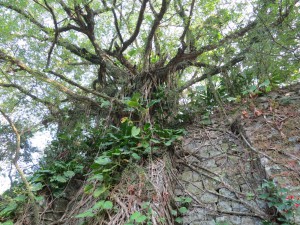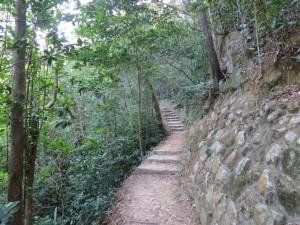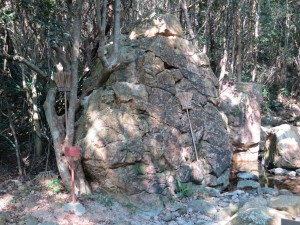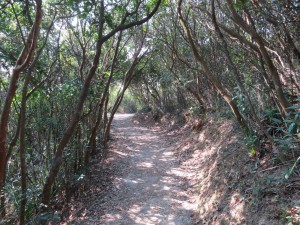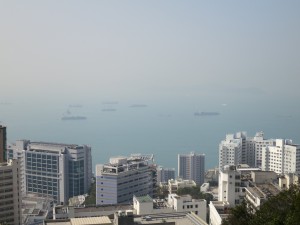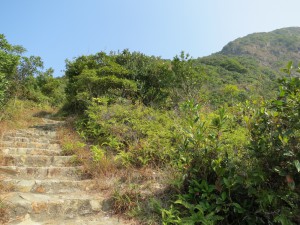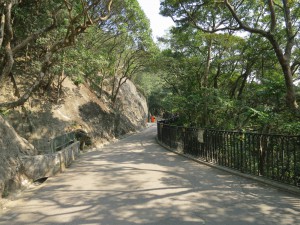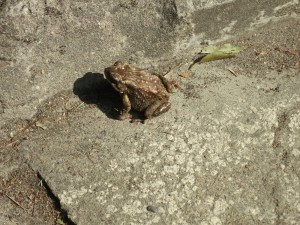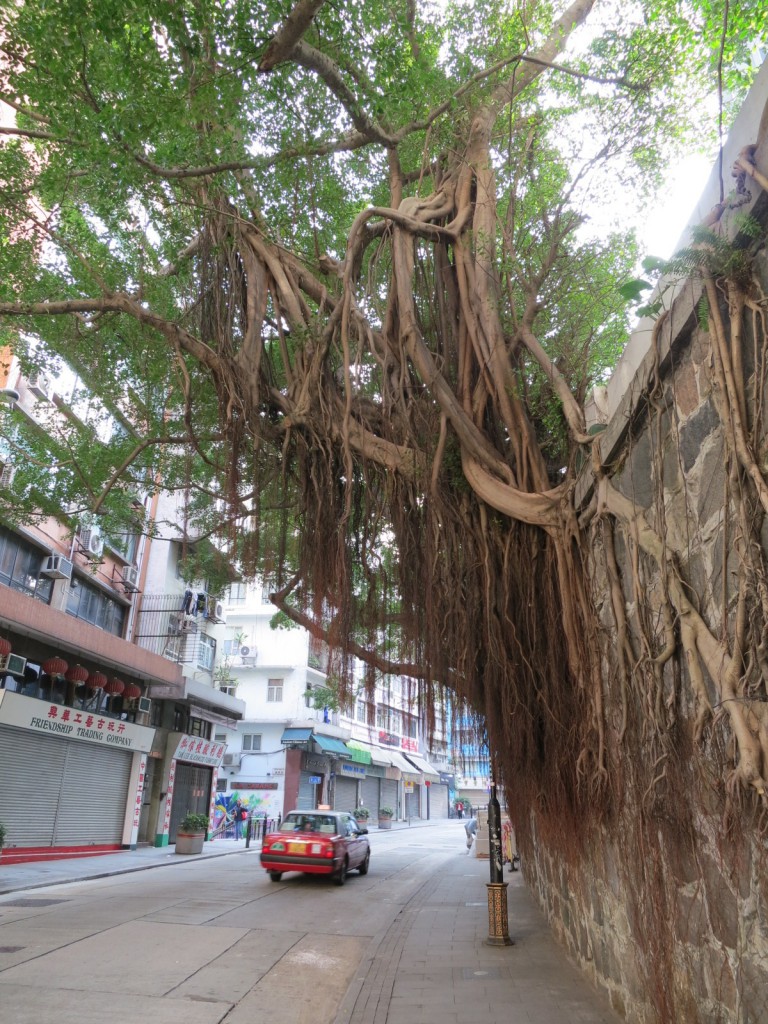Tag Archives: hong kong
Notes on Hong Kong
- The Octopus Card is just a plastic prepaid card, but it’s contactless, so you just have to place it next to a card reader, and it’s used almost everywhere. It started as a transit payment system, but many stores and most vending machines accept it too. I didn’t use my credit card the whole time I was here.
- Hong Kong bakeries are insidious and addictive—obesity at bargain prices. Beware!
- I’ve never seen so many watches. Rolex, Cartier, Omega, Tag Hauer, you name it—there must be hundreds of stores, and there are billboard-sized displays everywhere. You can easily spend more than US$100,000 for a watch if you are so inclined. Of course, there’s no tax.
- If you have a smaller budget, there are plenty of opportunities to buy fakes in Kowloon. As you walk down Nathan Road, touts approach you and say “copy watch?” If you look Western, that is. There are also touts for tailoring services, and they’re much pushier. They’ll follow you.
- There seems to be a market for replica guns. There’s a street in Kowloon with about two blocks of stores that sell them. I don’t know the legal status of guns in Hong Kong, but they’re not listed among the prohibited weapons when you go through immigration. Bullets, however, are.
- For as many people as there are in Hong Kong, it’s remarkable how much empty space there is. Of course, most of that space is very steep.
- Union flags are a common design on clothing and bags. I didn’t see anyone wearing a PRC flag. There was one guy in a Mao hat, but he was a Westerner.
- Hong Kong is a nice place to visit, and I’m glad I went, but the crowds were starting to drive me nuts by the end of the week. I think next time I’ll go to the Seychelles or someplace like that.
Aberdeen Floating Village
I took the bus to Aberdeen, on the south side of Hong Kong island, to take a sampan tour through the fishing village in the typhoon shelters. The fishing village is what remains of the Tanka boat dwellers. Historically, they lived on their boats, but I don’t think many of them do anymore. They certainly work there, though. There are fishing boats, sampans, rowboats, and floating platforms, all anchored in the middle of the bay.
The sampan tour was just supposed to be a standard tour operation. One was just pulling out as I got to the dock.
So I waited for the next one. While I was waiting, another sampan pulled up to the dock and a couple of people got on. The boat driver* said something to me, but I couldn’t understand him, and this obviously wasn’t the tour boat, so I just waved him off. He left, then immediately came back again as an old woman walked up to the dock. She asked me if I wanted a tour, so I said sure. it was HK$100, which was a little more than the price in the guide book, but the guide book has been fairly consistently wrong, so I just went with it.
This guy basically just ferries people to and from their boats, and picks up the odd tourist here and there when they happen to be standing at the dock. And I was his odd tourist for the day. All of the other passengers were going to their boats. For more than half of the trip, I was the only passenger. He would occasionally point something out, but he spoke no English, so I wasn’t always sure what he was referring to. Overall, I think it was better than the tourist boat would have been.
* Captain? Skipper? What do you call a guy who runs a sampan with his foot?
Signage
New Year’s Day
A low-key day. I wandered around Kowloon Park and watched an old woman do tai chi in a hedge maze, then took the ferry to Central, where there were more Filipinas camping out on cardboard. They were also in front of the HSBC headquarters.
I rode the double-decker tram for a while too, with no particular destination. It’s like when you’re at Disneyland and you’ve been walking all day, sometimes it’s just nice to ride the People Mover.
I got off a couple of times and bought things, then got back on again. A ride of any distance costs about 30 cents, so I wasn’t concerned about optimizing the cost.
That’s pretty much it.
Hong Kong Money
Most Hong Kong paper money is privately printed. There’s obviously a basic template, but different banks print their own notes within that template. Below are the current $50 notes from HSBC, the Standard Charter Bank, and the Bank of China.
The one exception seems to be the $10 note, which is published by the Hong Kong government using the same type of plastic that New Zealand uses.
Macau
I took the hydrofoil to Macau first thing in the morning on December 31. Macau is a former Portuguese colony that’s mostly turned into Las Vegas. The center of town still looks like the old colony, though, with forts and churches and densely packed, beat-up-looking buildings.
The focal point is St. Paul’s cathedral, which burned down in 1835, leaving only the facade.
So I got through that pretty quickly.
Adjacent to the church is the main fort of Macau. They’ve put a history museum in the center of it, which is mostly underground.
It’s not really a large museum, but it’s nicely done. It covers the early history of China and Portugal, done in parallel, until they converge in the 15th century. Most of the displays are commerce-related, since Macau was concerned mainly with trade and fighting off the Dutch.
The fort is, not surprisingly, on a hill, and has views of the city in all directions through the embrasures.
In the center distance, you can see the tip of the Macau Tower, which was modeled after the one in Auckland. I didn’t jump off of it, though, because no one was paying me.
That big flared building at the left is the Grand Lisboa, one of Stanley Ho’s properties. For many years, Stanley Ho was the only casino owner in the territory. Then other casinos started coming to Macau, and he had to start scrambling to compete. Buildings shaped like giant pineapples seem to be a part of that.
In front of St. Paul’s were several people handing out bright orange bags. The bags said “Jesus loves you,” plus a whole bunch of other stuff in Cantonese. It was getting hot, so I got one to put my sweatshirt in. There were also some pamphlets, but they were in Cantonese too.
Down the hill from the fort and the church facade is a tourist street that seems to get more densely packed as you walk down it, like you’re being squeezed through a funnel.
At the bottom of the hill is a plaza with another church. There are a lot of churches in the center of town, and most of them are yellow.
The nicer parts of town were like this: European-style buildings around small plazas.
Other parts were less nice.
I got lunch at a restaurant that my guide book recommended as a good place to get Macanese food. As it turns out, it was a Portuguese restaurant. The guide book also spelled the name wrong. It was good, though.
I spent another hour or two wandering around with my Jesus Loves You bag, then caught the bus back to the hydrofoil. The hydrofoil trip was uneventful, but I hadn’t considered how many people would be coming into Hong Kong for New Year’s Eve. Pscrillions, that’s how many. It took me an hour and a half to get through immigration.
Oddly, the act of going through immigration again reset the duration of my stay. An American can stay for three months as a visitor, but going to Macau for a day restarts the three months. I wonder how many times you can get away with doing that.
Having spent most of the day standing and walking, I wasn’t very enthusiastic about staying up until midnight to watch the fireworks. I went to bed at 8:30.
Bamboo
Victoria Peak
I showed up at the bus stop promptly at 8:00 AM to discover that the buses to the tram start running at 10:00. So I walked. I could use my Octopus Card, so I didn’t have to wait in the ticket line.
The tram is similar to the one in Wellington, but longer and steeper. It has a maximum 48% grade, which gives it a Mystery Spot feel. (The Wellington grade is less than 18%.)
The Peak Terminal is a large anvil-shaped building with several floors of shops and restaurants and—at the top—the Sky Terrace, which costs extra. I’m sure the view is very nice, but right next to the Peak Terminal is the Peak Galleria, which also has several floors of shops and restaurants, and their rooftop is free. It’s not as high as the Sky Terrace, but if you’re already on top of a mountain, who cares? It’s not like you can see the difference.
There’s a 3.5km walk that the guide book mentioned. It was a little short on detail, but it sounded worthwhile. It starts down a steep maintenance road with banyan trees.
I walked for about a kilometer to a turnoff to a dirt path that loops back to the peak. The sign said it was 6.75 km, but the map didn’t show any other path, so I took it.
It’s a well-maintained path. There are even brooms in case you need to do some sweeping.
It’s mostly wooded, but there are occasional breaks with views of Pok Fu Lam and the South China Sea.
But it’s not really a level path. There’s a lot up and down, culminating in a long steep climb back to the peak.
Which turned out to be at the middle of the path I was supposed to take in the first place. That path is 3.5 km, paved, and level.
It was there that I encountered a little girl on a scooter, who told me, with tremendous enthusiasm, “I saw the frog! It’s there!”
And indeed it was.

